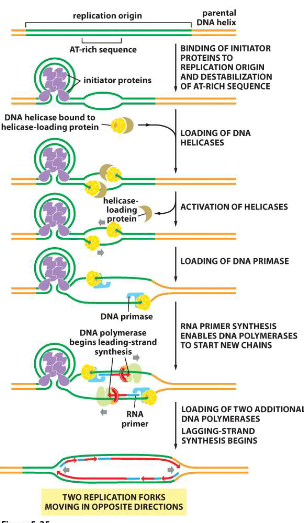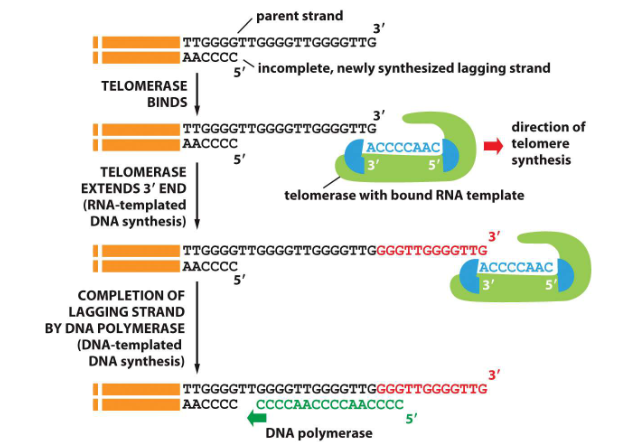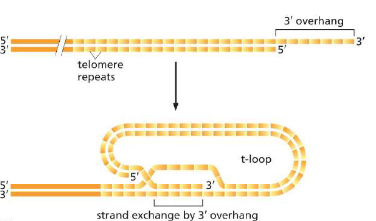Replication, initiation, and telomeres
1/17
There's no tags or description
Looks like no tags are added yet.
Name | Mastery | Learn | Test | Matching | Spaced |
|---|
No study sessions yet.
18 Terms
How many origins of transfer do bacterial DNA have?
one
How is replication in bacteria initiated?
binding of initiator proteins to replication origin
Is there any loss of DNA in replication in bacteria?
no
Give one feature of replication origins
A-T rich which makes them easier to break (2 H-bonds)
Replication in bacteria (5 steps)
initiator proteins wrap the DNA around the complex and cause the helix beside it (replication origin) to destabilise
helicases are loaded by loading proteins and attach to the helix
loading proteins detach and helicase initiates the replication cycle
primase creates first RNA primers
rest of complex assembles and replication starts

How many origins of replication do eukaryotes have?
multiple proportional to their size
G phase:
origins are loaded with replication machinery (replisome)
S phase: 4 points
replisome is activated
no new helicase loading
phosphoryaltion of proteins prevents new assemby of replication complex until next cell cycle
histones are produced to form new nucleosomes
Why are origins activated at different times during S phase?
to ensure early replication stalling or mistakes can be repaired

State 2 problems that arise as a result of replication at the ends of chromosomes
ends look like broken chromosomes to DNA repair machinery
progressive shortening of lagging strand
Progressive shortening of lagging strand
because of the incomplete replication of the linear DNA, the DNA at the very end of the chromosome cannot be fully copied in each round of replication
How is the issue of progressive shortening of lagging strand fixed?
telomere replication by telomerase
How is the issue of seemingly broken chromosome ends fixed?
protecting chromosome ends via shelterin complex
What are telomeres?
repetitive ends of chromosomes
How are telomeres extended? (2 points)
replication by telomerase, forming a repetitive DNA motif
contains an RNA template to replicate that sequence
Telomere replication by telomerase (3 points)
telomerase pairs up with parent strand using its integral piece of RNA
the RNA is used as a template to extend the parent strand
this is done 7 times and new RNA primer can be inserted and DNA polymerase can finish the end of the chromosome

What is the shelterin complex?
DNA binding proteins that tuck the single stranded 3’ overhang of telomere into the double strand, resulting in a T-loop

What is the main benefit of the shelterin complex?
hides chromosome ends from DNA repair machinery, preventing erroneous repair